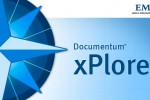
Module 1
Administrative Information and Prescribing Information
The name of the folder for module 1 should be m1.
This module contains administrative information that is unique for each region. Regional guidance will provide the specific instructions on how to provide the administrative forms and detailed prescribing information.
Country (national or EU / USA / Japan)
- Application number centralised application Number or MRP procedure number
- Calibri;”>Agency-name picklist value in the most recent EU m1 eCTD specification
- Submission type picklist value in the most recent EU m1 eCTD specification
- Procedure type picklist value in the most recent EU m1 eCTD specification
- Invented-name trade name
- INN The International non-Proprietary name for the drug substance
- Sequence The sequence number here must match the sequence number in the folder structure
- Related-sequence
- Submission-description This element is used to describe this particular eCTD sequence
Country In the centralised procedure, there should only be one envelope with the entry ‘emea’. For MRP/DCP, each country in the procedure needs to have a separate envelope entry. Common must not be used as a country identifier in the envelope.
Application number The application number should be the centralised procedure/application number (EMEA/H/C/…), MRP/DCP procedure number (e.g. SE/H/1234…) or other national application or licence number as required by NCAs. Multiple entries are possible. The full application number including the regulatory activity identifier should be used if known.






